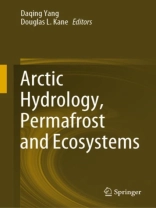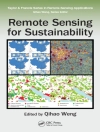This book provides a comprehensive, up-to-date assessment of the key terrestrial components of the Arctic system, i.e., its hydrology, permafrost, and ecology, drawing on the latest research results from across the circumpolar regions. The Arctic is an integrated system, the elements of which are closely linked by the atmosphere, ocean, and land. Using an integrated system approach, the book’s 30 chapters, written by a diverse team of leading scholars, carefully examine Arctic climate variability/change, large river hydrology, lakes and wetlands, snow cover and ice processes, permafrost characteristics, vegetation/landscape changes, and the future trajectory of Arctic system evolution. The discussions cover the fundamental features of and processes in the Arctic system, with a special focus on critical knowledge gaps, i.e., the interactions and feedbacks between water, permafrost, and ecosystem, such as snow pack and permafrost changes and their impacts on basin hydrology and ecology, river flow, geochemistry, and energy fluxes to the Arctic Ocean, and the structure and function of the Arctic ecosystem in response to past/future changes in climate, hydrology, and permafrost conditions. Given its scope, the book offers a valuable resource for researchers, graduate students, environmentalists, managers, and administrators who are concerned with the northern environment and resources.
Jadual kandungan
Introduction.- Hydrology.- Permafrost and seasonal frozen ground.- Ecosystems.- Linkage and integration.
Mengenai Pengarang
Dr. Daqing Yang is a Research Scientist at Environment and Climate Change Canada, Victoria, Canada. He specializes in cold region hydrology and climates; northern river streamflow and water temperature regimes and changes; snow cover and snowfall measurements and dataset development; climate change and human impacts on watershed hydrology; and applications of remote sensing data in high latitudes.
Dr. Douglas L. Kane is a Professor Emeritus at the University of Alaska Fairbanks, USA. His research interests include groundwater hydrology; snow hydrology; water resources engineering; cold region hydrology; fish hydraulics; heat transfer; and climate change.












